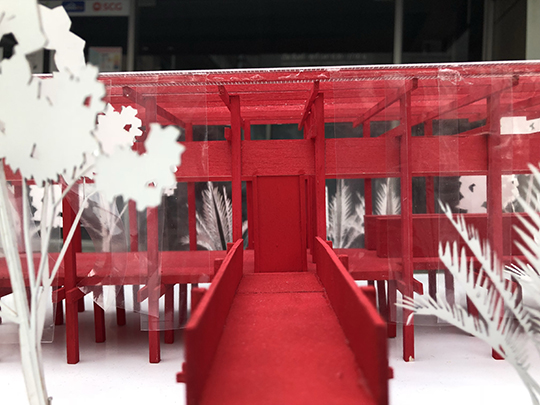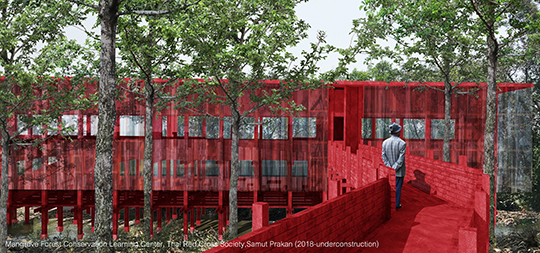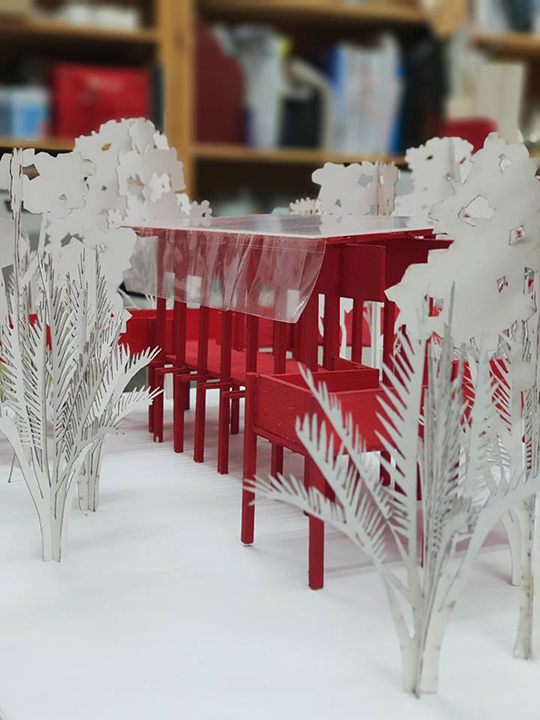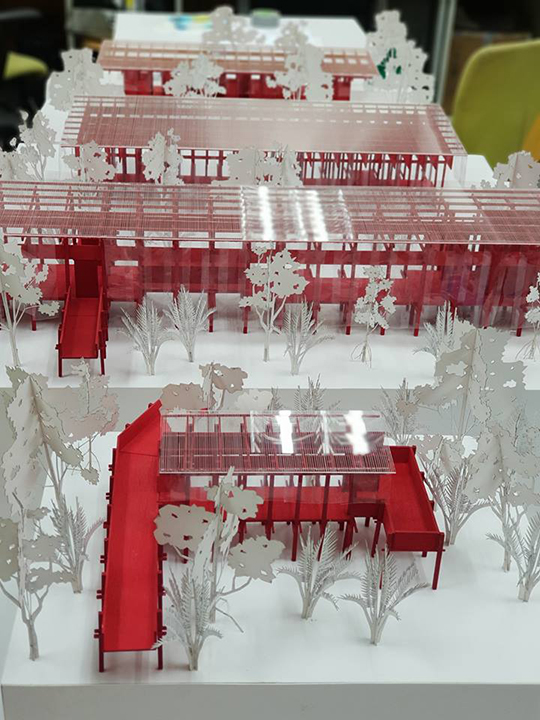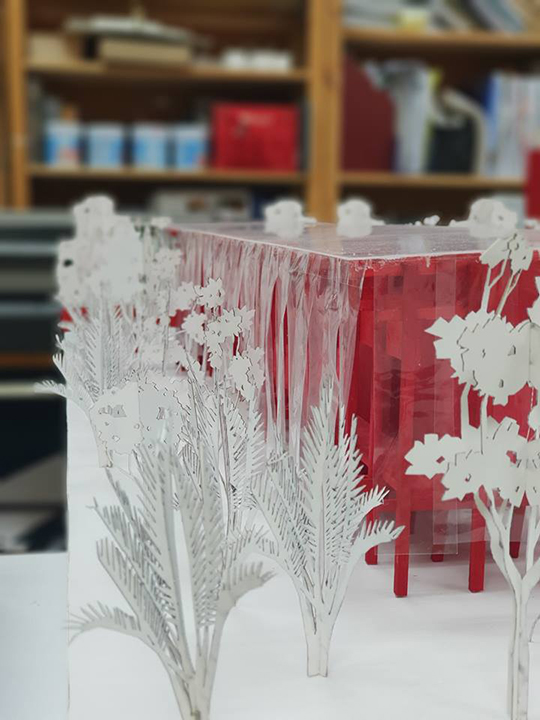MANGROVE
Mangrove
Sawangkanives Mangrove Forest Conservation Learning Center, Thai Red Cross, Samut Prakan Province In recent years, the incessant decrease of mangrove forests in the Gulf of Thailand, Samut Prakarn Province, where most of the land area has been turned into industrial plant sites, affects the ecology and life of people in the neighborhood. The Thai Red Cross Society is one of the humanitarian and environmental advocacy groups that try to restore the mangrove forests in the area under their care to preserve the nature and increase vegetation, which is a habitat of aquatic animals, insects and birds.
This architectural project was to become a link between humans, vegetation, soil surface, and animals, to help people aware of the urgent need to preserve the soil surface, and prevent coastal erosion. The project, constructed on the area of 48,000 sq.m., has12 small buildings to be used as a gallery, a cafe, a reception hall, and a meditation pavilion, all of which are rehabilitation facilities for elderly patients in the care of the Thai Red Cross Society and the general public who come to receive medical attention.
Since mangrove forests are seen a timeless place, the design wishes to reflect this notion by employing the concept of Non-Architecture. There is a repetitive pattern that goes back and forth from the buildings, the structure to the details, which can also be considered as Basic Architecture, where buildings are in harmony with trees that will remain in the same shape no matter how many years will pass. Seven gallery pavilions are located among trees. People will find in each pavilion information of different kinds of plants that grow in that area. The other pavilions of varying sizes based on its function are the cafe, the reception hall, the restrooms, and the meditation room. All are connected by elevated walkways. These buildings that stand among water, land, forest, and air are symbols of peaceful coexistence between humans and nature. The lightweight structure allows users to feel the sunlight and sea breeze. The 450-meter-long elevated walkway gradually sloping into the mangrove is a suitable workout space for rehabilitation patients and the elderly who are the main users of this facility of the Thai Red Cross.
We are aware of the environmental condition of the area, so the construction materials we used is a small component system made of fly ash cement, which is an innovative mixed concrete that is lighter than conventional cement and is also good at resisting sulfate in sea water. Each component was made at the area close to the construction site and was then gradually transported into the mangrove so that the mangrove is least damaged and stays in its healthiest condition. The project is currently under construction. It is hoped that once the project is complete, it will be an example of an architecture that preserves original landscapes by using the simplest building designs. This will mark the beginning of a better quality of life.

